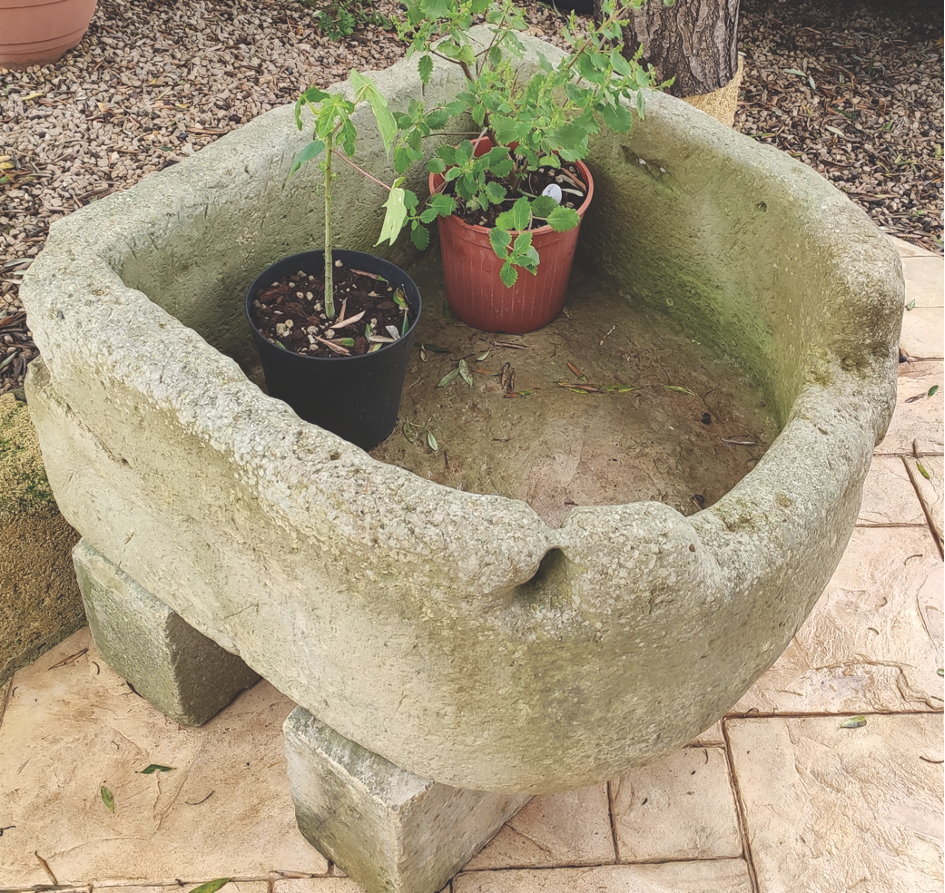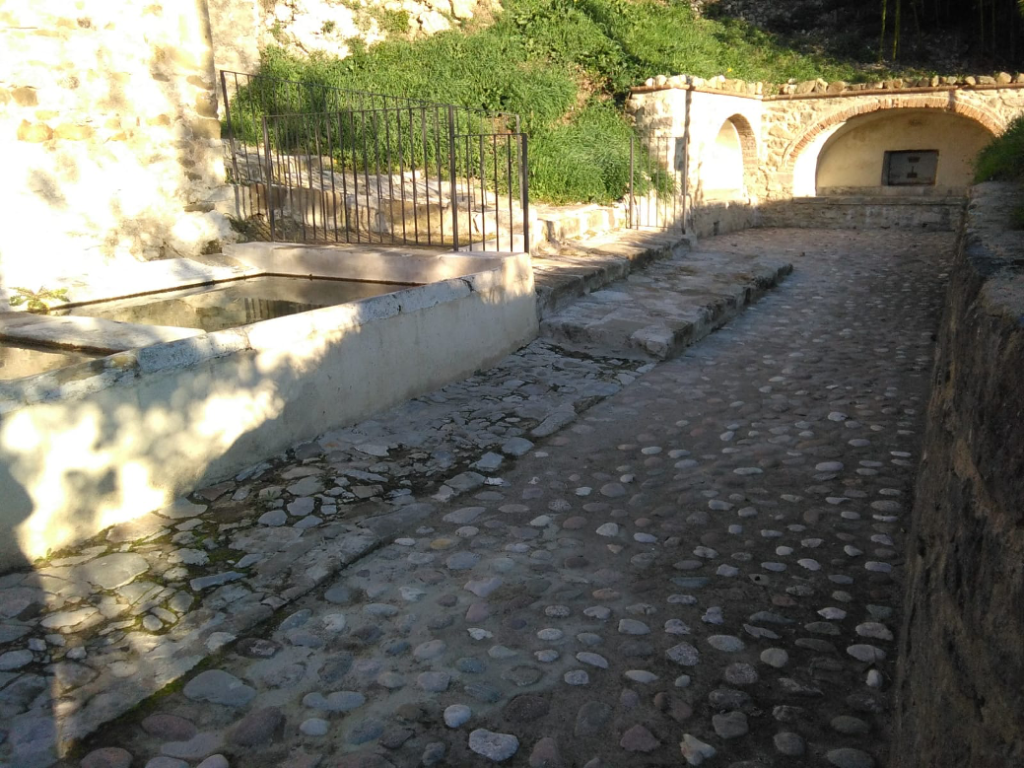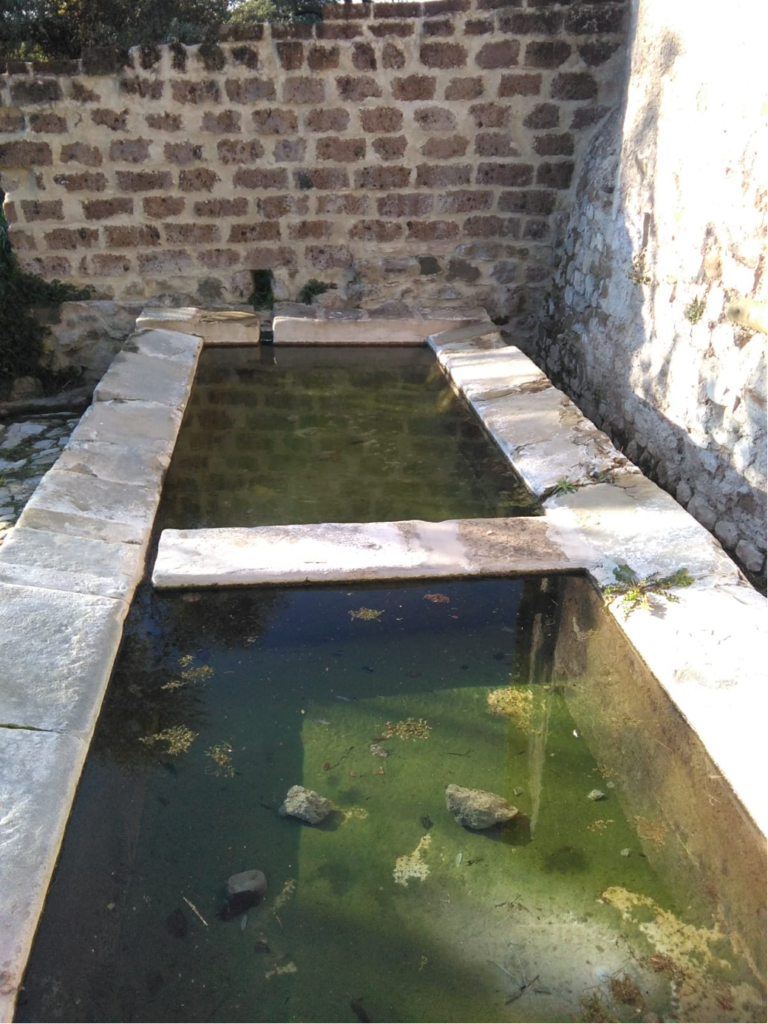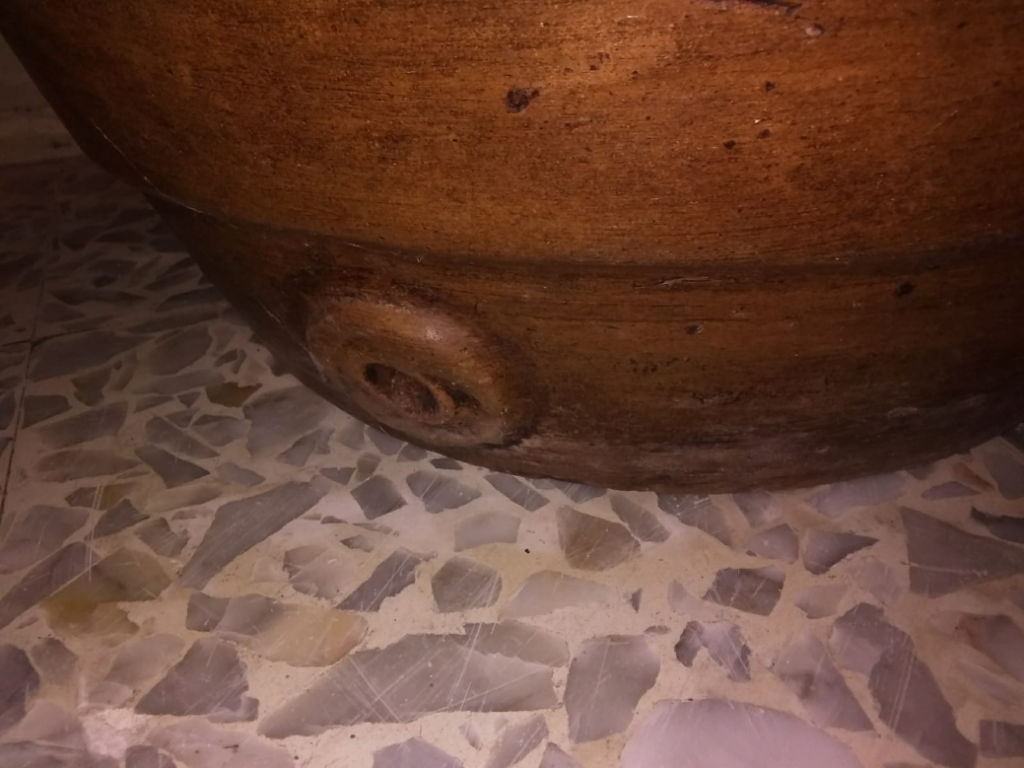2020.12.23 | By Rachele Pierini and Tom Palaima
§0.1. How hard was it to whiten dirty clothes in the Bronze Age Aegean? This question arose during the November MASt seminar, while discussing Anne Chapin’s presentation about the visual impact of textile patterns in Aegean Bronze Age painting. Hedvig Landenius Enegren, one of the steady members of the MASt@CHS group, took forward the debate by providing information about the process of washing with cinders, which is a long but effective method to whiten and sanitize clothes. The process was still in use in Italy in the 20th century CE. In her fieldwork, Landenius Enegren’s sources are interviews with ladies from South Italy who remember this technique from their childhood and adolescent years. Rachele Pierini, a founding member of the MASt@CHS group, has joined the discussion by sharing the information she collected by interviewing another lady from central Italy who has been washing clothes with cinders as late as the 1950s.
§0.2. Here we offer a reconstruction of this process as described by the ladies interviewed by Landenius Enegren and Pierini. We would also like to highlight two Youtube videos that deal with washing with cinders:
Presenter: Hedvig Landenius Enegren
§1.0. My notes derive from conversations with my informants, two women in their 60s and 70s living in the Apulian region of Italy (Lecce county) about how the laundry was done with cinders, as they remember it when they grew up. I will present my notes in Italian as they appear in my notebook and then do an English freehand translation of the main points.
Interview 1: Conversation with R. Mauro: Lavare con le cenere (August 22, 2017)
§1.1. Cenere pulita e selezionata dal carbone con setacci—forse l’ultima risciacquatura si usava per i capelli!
- prima lavavano nelle pile di pietra con del sapone scuro rosso. Il bucato prima veniva lavato tra lenzuola con scaglie di sapone.
- si strizzavano i panni.
- preparavano un grande contenitore di terra cotta ‘cofano’ (= recipiente di metallo in italiano, in dialetto ‘cofanu/cofunu’, in creta; largo sopra, bocca larga 150 cm, altezza 120–130 cm).
- veniva coperto da un telo bianco tessuto o da un telo pesante di telaio per fare da filtro all’esterno del cofano. Mettevano il telo, sistemavano le lenzuola con questo telo, richiudevano e mettevano sopra le cenere. Buttavano acqua calda più volte.
- Il cofano veniva messo su un sgabello pedano—spalliera, la base aveva una bocca per far uscire l’acqua usata per lavare i capelli—sgrassatore.
Lenzuola bianchissime, rimanevano con un profumo fantastico—lino come una seta.
English freehand translation:
Clean cinders were sifted from carbonized logs. First the laundry was put in between sheets and washed in the pila di pietra = wash basin of stone,[1] with flakes of dark red soap. The washing was then wrung out. A large ceramic container with a large mouth ca. 150 cm in diameter and ca. 120–130 cm in height was prepared.[2] It was covered with a white hand-woven cloth hanging on the outside edges of the container to serve as a filter. The sheets were put in and the cinders were put on top of the filter cloth. They threw hot (boiling) water over several times. The jar was then placed on a footstool, the backside of the base of the jar had a spout through which the water exited, this water was used to shampoo hair, a very good anti-grease product. The sheets became very white with a wonderful perfume, linen felt like silk.
Interview 2: Conversation with Giuseppina Pede (July 2017 and November 11, 2020)
§1.2. The following dialectal terms are here given with their Italian meaning: the verb rimuddhrare has the meaning ‘lasciare bagnare’ or just ‘bagnare’; the noun in singular ceneraturu/cinniraturu has the meaning ‘una tovaglia usata per filtrare le cenere’; the noun in plural verse has the meaning ‘versare man mano l’acqua più volte’; the noun in plural vacate has the meaning ‘far uscire l’acqua più volte’; the noun in singular lissìa has the meaning ‘ultima acqua usata nel cofino’.
- ‘rimuddhrare’ = bagno con acqua fresca, da 2–3 ore a una notte.
- piegare il bucato bene nel cofino (cofinu in dialetto), contenitore di creta, di diverse dimensioni a seconda della quantità del bucato.
- con una tovaglia ‘ceneraturu/cinniraturu’ grande come un lenzuolo con buchi più larghi, mettere tovaglia con cenere sopra, (cenere pulita) ed un’altra tovaglia sopra.
- la prima acqua quasi fredda, poi 10 ‘verse’ con acqua più calda.
- c’era un buco nel vassoio, si riscaldava sempre quell’acqua.
- dopo 10–12 ‘vacate’ lasciare raffreddare fino alla mattina.
- si toglievano e mettevano in una pila di pietra per lavare con acqua fredda e sapone.
- con l’ultima acqua che si chiamava lissìa si lavavano i capelli e parecchie cose, come la roba colorata.
English freehand translation:
Soak the laundry in cold water 2–3 hours up to an entire night. Fold the laundry and put it in a particular container of adequate dimensions according to how much washing you have. Place a special ‘cinder’ cloth, a sheet/cloth with larger holes, in dialect named ‘ceneraturu’, with clean sifted cinders and then put another cloth on top. Over this pour almost cold water first, and then continue about 10 times with warmer water each time. The container had a spout through which the water was emptied and you reheated and reused this same water. After about 10–12 times of pouring the water you leave the laundry through the night to get cold. The next morning you take it out and put it in a tub / stone basin to wash with soap and water. You could wash your hair and other things, such as your coloured laundry with the last reused water, called lissìa in dialect.
§2. The two accounts above differ only as to when actual soap was used. The first account states that the laundry was washed with soap before the cinder process and the second afterwards.
§3. For the sake of our common interest in the Greek language and in all things Hellenic, I highlight the following: Lecce province in the Salento area of Apulia includes the area called La Grecìa Salentina which comprises several villages, among them, Calimera, Martano, and Sternatia. Here, Griko, a form of Greek fused with the local Salentine dialect, is still spoken by the elderly.[3] In Griko doing laundry is κάνω μπουγάδα with reference to the recipient for the ‘washing’ bugada/μπουγαδα taken from the Italian term for laundry, bucato (for the term bucato in Italian, see below in the section by Rachele Pierini). In the Greek part of the Salento, another way of saying doing laundry is using a verb nkofignázο, derived from the large container cofanu/o or cofinu/o, mentioned above. For instance, the equivalent of the phrase “on Saturday we will do laundry,” is expressed as to samba nkofignάzome.[4]


§4. Landenius Enegren Bibliography
Douri, A., and D. De Santis. 2015. “Griko and Modern Greek in Grecìa Salentina: an overview.” L’Idomeneo 19:187–198. http://siba-ese.unisalento.it/index.php/idomeneo/article/view/15295.
Greco, C., and G. Lambrogiorgiou. 2001. Lessico di Sternatia (Paese della Grecìa Salentina) Λεχικό του ελλενικού ιδιώματος της Στερνατίας, Neogreco-Grico. Lecce.
Topic: Whitening and sanitizing clothes through cinders: A reconstruction of the process in central Italy in 20th century CE, with a comparison with a Minoan dye-workshop.
Presenter: Rachele Pierini
§5. The Italian word for ‘laundry’ is bucato in standard Italian, with the feminine bucata as a dialectal variation that is used especially by elderly people. Origins and etymology of bucato are unclear, with hypotheses connecting it to Franconian bukón ‘to wash’ (https://www.etimo.it/?term=bucato). However, Italian bucato is also the past participle of the verb bucare ‘to make a hole, pierce’. The latter proposal seems to have a direct connection with a characteristic of the vessel in which clothes were sanitized and whitened prior to the introduction of bleach and washing machine. The following reconstruction of the process is based upon the description provided by my own grandmother “Nonna Nunzia,” a 91-year-old lady from Baschi (in central Italy, ca. 100 km from Rome and 15 km from Orvieto) who used this method to sanitize and whiten laundry until the 1950s—after that, bleach was used instead.
§6. The process of whitening and sanitizing clothes through cinders
Stage 1. The first step was to go to the fontane ‘fountains’. Whereas in today’s language ‘fountain’ is an ornamental structure pumping jets of water, le fontane (remarkably plural, see below at §7.2) referred to an area outside the inhabited part of the town that was devoted to the washing of clothes and larger fabrics like sheets, curtains, and blankets.
Stage 2. Go back home and put the washed white laundry into the ziro, a large terracotta vessel with a lateral hole at the bottom with dimensions and shapes varying according to family’s needs and the space that was available at home (see above at §5 and below at §8). With the aim of whitening and sanitizing the laundry, cold cinders wrapped in two large and white kitchen towels were put on top of the filled ziro. Boiling water was slowly poured over the kitchen towels. Two details are important. First, the water had to be not just hot but boiling. Second, the action of pouring boiling water had to be done very slowly to make sure that it could actually penetrate the whole content of the ziro and be absorbed by the laundry. Once the water exited from the lateral hole at the bottom of the ziro, the laundry remained into the ziro to cool down. There was not any cover closing the ziro in this process.
Stage 3. Go again to le fontane to rinse the laundry and finally go back to home to hang it out.
The whole process took a lot of time. Let’s suppose that stage one took place in the early morning and the first phase of stage two in mid-morning; stage three will have taken place the day after since laundry needed the whole night to be cooled down.
§7.0. The areas of le fontane in Baschi
In Baschi there are two areas with fontane, one north and one south. Both of them are still visible, with some minor changes that have taken place just in the last few years, since their use as laundry places has been abandoned only in the early 1990s. Although the washing machine far predates this chronological stage, the use of this tool has long been restricted to daily clothes, with precious dresses and large fabrics such as sheets and curtains being regularly washed in le fontane until the early 1990s.

§7.1. The picture above in Figure 3.0 shows the area of le fontane in the south part of the town. On the left side, there are two basins, previously covered by a canopy that has been now removed. At the bottom, there is a further basin under the arch.


§7.2. The two contiguous basins were used to wash the laundry, whereas the single basin under the arch was used, rather, to get drinking water. As the pictures in Figures 3.1 and 3.2 show, the washing area was made up of plural basins and this characteristic is reflected in the noun fontane, used in the plural form to refer to the washing area.


§7.3. In addition to a reconstructed canopy and column, the image in Figure 5 shows that in this case, too, several basins were what le fontane were made of.
§7.4. Both areas of le fontane in Baschi present some interesting similarities with a dye-workshop at Alatzomouri-Pefka (Crete),[5] an archaeological site dating to Middle Minoan IIB (ca. 1750–1700 BCE) and associated with the largest nearby settlement of Gournia. First, both le fontane and the dye-workshop are located outside the inhabited part of the city. In particular, the Minoan dye-workshop is situated well beyond the suburbs of Gournia, possibly because of the odiferous nature of processing dyes (Pareja et al. 2016). Second, both le fontane and the dye-workshop are placed near water sources, a deep well in the case of the Minoan dye-workshop. Third, the rectangular shape of both constructions. Fourth, the number of the basins, up to three in the fontane and seven in the Minoan dye-workshop. Finally, the material, which is stone for the fontane, whereas the basins of the dye-workshop were rock-cut.
§8. The ziro-vessel
The name ziro applies to a number of terracotta vessels sharing the characteristic of having a lateral hole at the bottom (figs. 6.1 and 6.2) and to be large enough to contain the laundry. Now that the process of washing through cinders has become obsolete, these vessels are mainly used as pots to plant lemon trees or flowers (fig. 6.3 and 6.4). The ziro-vessel has long been used as a recipient to contain oil as well (fig. 6.5). This function too has been recently dismissed, i.e., when the inox replaced terracotta vessels in this function.





§9. Pierini Bibliography
Pareja, M. N., Ph. Betancourt, V. Apostolakou, Th. Brogan, and A. Koh. 2016. “Aegean Dyes: Unearthing the Colors of Ancient Minoan Textiles.” Expedition 58:21–27.
Notes
* I would like to thank Dr. Francesco Meo and Sig. Salvatore Renisi for their generous help with photographs of a pila di pietra.
[1] These stone washtubs were often communal and fixed to the walls in the shared courtyards of almost every house of the typical case a corte (literally courtyard houses) in the Salento area of Apulia.
[2] Much like the ziro in fig. 6.3 pertaining to §8 in the section by R. Pierini in this paper.
[3] At which time Greek was introduced in the area is still open to debate. Does it originate in Magna Graecia or much later in Byzantine times? The topic merits full discussion that far exceeds the scope of the present paper. For a useful article on the topic with pertinent references, see Douri and De Santis 2015.
[4] Greco and Lambrogiorgiou 2001, s.v. bucato (p. 66).
[5] An in-depth comparative analysis is outside the scope of this paper and will be presented at a later date.
